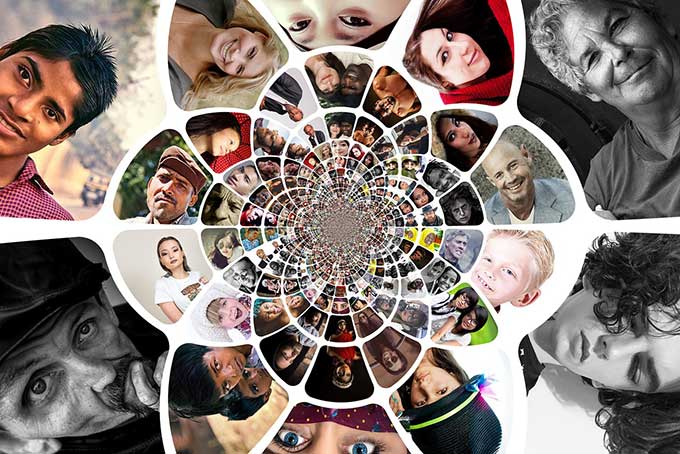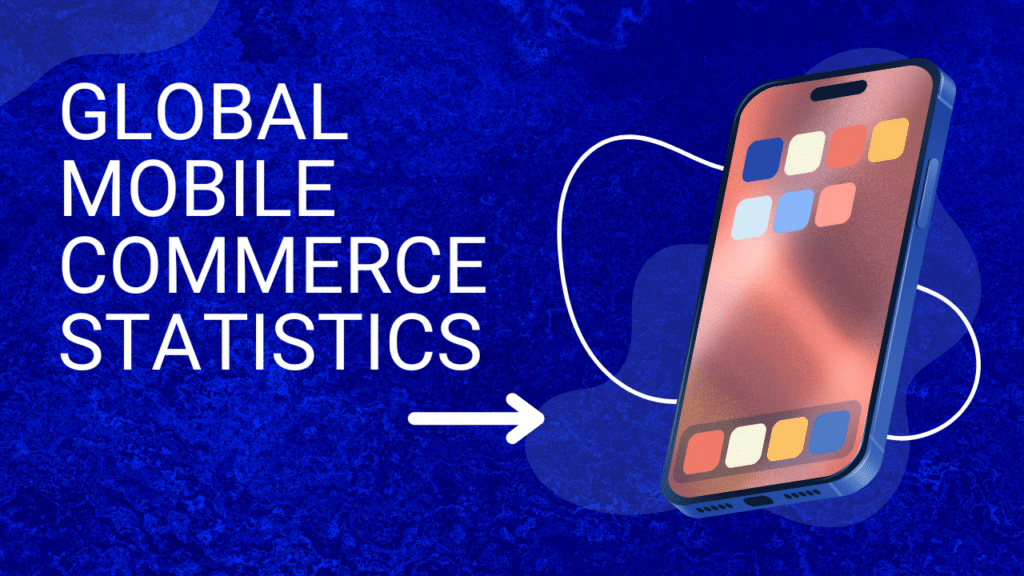Personas, proposed by Alan Cooper, a noted pioneer software developer in the late 1990s, is a method that has gained increasing attention over the years. In fact:
Personas have now become the new standard and a fundamental part of a UX designer and conversion optimizer’ toolkit.
But, many marketers have tried them and given up, so it begs the question:
Are personas as useful as we think?
The most serious limitation of the personas method is that it is difficult or impossible to verify if they’re accurate.
What’s more?
Even the most well-researched personas have limitations
It is important to keep in mind that personas by their very nature have limitations, no matter how well-researched and accurate they are.
Any persona is developed from a limited number of individuals, which makes it hard to determine if it represents the target customers and their needs accurately.
Another major problem is:
Manufactured personas often fall flat, coming across as abstract or one-dimensional. In this case, they don’t seem like real people, and it is hard for employees and customers to really relate to or empathize with them.
Also most personas represent only a small portion of the potential user space.
Given several personas, there is no good way to assess whether the group of personas appropriately represents the population of interest.
What are personas?
Personas are characterizations of a user who represents a segment of your target audience, and though depicted as a specific person is not a real individual; rather, it is synthesized from observations of many people.
Each persona represents a significant portion of people in the real world and enables companies to focus on a manageable and memorable cast of characters, instead of being overwhelmed by thousands of individuals.
“semi-fictional representation of your ideal customer based on market research and real data about your existing customers.”
According to Elastic Path User Experience Manager, Laura Ballay;
“persona’ is a term like ‘design’ that gets tossed around and means different things to different people”
and often, folks confuse personas with other elements of marketing and research.
Put it this way:
Personas are fictional characters based on actual behaviors of target customers. A UX professional can observe these behaviors when talking one-on-one with users. Customer personas are a composite of this qualitative research, and are typically presented as one to two page documents.
Here’s a more vivid example:
By identifying individuals, designers were able to focus on the primary user and make customized design decisions that fit these individual profiles rather than trying to design for a broader audience.
Now,
A good, effective persona:
- Represents a major user group for your website
- Expresses and focuses on the major needs and expectations of the most important user groups
- Gives a clear picture of the user’s expectations and how they’re likely to use the site
- Aids in uncovering universal features and functionality
- Describes real people with backgrounds, goals, and values
Also, a good persona is a narrative that describes the flow of someone’s day, as well as their skills, attitudes, environment and goals and answers critical questions that a job description or task list doesn’t, such as:
- Which pieces of information are required at what points in the day?
- Do users focus on one thing at a time, carrying it through to completion, or are there a lot of interruptions?
- Why are they using this product in the first place?
A poor, bad persona: is a description or a list of tasks or duties, without regard to the user’s needs, desires, or motivations. A persona is not only a demographic profile, a market segment or a summation of survey data.
The different types of personas
When it comes to personas, there are different types that will be appropriate for different aspects of the business.
And you’ll hear a lot of different names thrown out there: Design, marketing, buyer and user personas.
Many of these are actually overlapping types of personas. Ultimately, the biggest difference is who will be using your product (user persona) or who will be buying the product (buyer persona).
Buyer persona
A “buyer persona” is a fictionalized profile of your “ideal” customer based on market research or actual data of your existing customers.
This includes both objective and subjective information. Buyer personas provide tremendous structure and insight for your company.
“A detailed buyer persona can help you determine where to focus your time, guide product development, and allow for alignment across the organization.”
They also reveal insights about your buyers’ decisions – the specific attitudes, concerns and criteria that drive prospective customers to choose you, your competitor or the status quo.
When creating your buyer persona(s), consider including customer demographics, behavior patterns, motivations, and goals. The more detailed you are, the better.
A detailed buyer persona will help you determine where to focus your time, guide product development, and allow for alignment across the organization. As a result, you will be able to attract the most valuable visitors, leads, and customers to your business.
User Personas
A “user persona” is a representation of the goals and behavior of a hypothesized group of users. These people are product end-users, the ones who are actually using your product, not necessarily the one deciding to buy it from you.
In many cases, the child is the “user persona” for the book. The parent will be the “buyer persona”, the decision-maker who ultimately buys (or doesn’t buy) the book for the child.
A B2B example could be if you’re selling a software product to a small or midsized company. Likely, the CEOs won’t be “using” the product, however, they’re buying it so you need to figure out an angle that would appeal to them.
The problems of data collection, scripted Q&A’s and surveys
1. Determining the sample size
There are tons of factors to consider when planning your actual interviews. And there’s no doubt, effective personas require substantial conversations with a large sampling of your target audience. But how large should this sample be?
Researchers vary widely in their recommendations, with some samples containing as few as 5 participants. Sociologist Daniel Bertaux stated in a 1981 paper that “15 is the smallest acceptable sample.”
More recent research tends to focus on the number of interviews, but these estimates vary widely as well. Gaskin and fellow researchers in Voice of the Customer recommend 10 – 30 interviews, while Mark Mason in his 2010 review of 560 research papers found the number of interviews ranged from 1 – 95, with an average of 31.
When deciding on how many customers to interview, remember you need an in-depth understanding of the customer’s buying process and what led to their decision. Ideally, you want to interview as many customers as you can, but this is often not feasible because of the project timelines.
Due to time constraints, it might be tempting to just conduct scripted interview and surveys. But the information you get will likely be incomplete, and an in-depth conversation is really what you need to get an accurate picture of your customers.
2. It is tempting to take shortcuts
Not everyone likes doing user research. The reason might be they think they “just know” what the customer wants, they’re frightened of what they might find out, or they just don’t see the value.
- Personas are only useful when they are validated based on research, provide relevant insights into users and their behaviors, and evoke empathy
- If your persona research fails to do these things, they will be ineffective in raising user awareness
- It’s hard to empathize with a fictional character based on “obscure research”
- The danger is designers may rely too much on personas that aren’t accurate or useful
3. Ethnographic studies are a good way to get this information but they are expensive and time-consuming
Ethnography is a study through direct observation of users in their natural environment rather than in a lab.
The objective of this type of research is to gain insights into how users interact with things in their natural environment. When employed to its full potential, ethnography can uncover opportunities for innovation and better customer experience.
It can offer benefits, such as identifying user needs that haven’t been met, and testing demand for new products before you invest the time in creating them.
However, it is expensive and takes a lot of time, which means it might not be feasible for many companies.
Even if ethnographic studies are not a possibility for your company and you need to use other forms of research, there are some common mistakes you should avoid:
Don’t just talk to a few customers or sales reps and make up the rest based on a few generic insights. Don’t get sidetracked by irrelevant details, like the person’s name, or finding a good stock image. And don’t try to develop multiple personas at once, which will only cause your team to feel confused and overwhelmed.
The trouble + issues with using personas

1. Wrong persona, wrong product
There are several reasons a product might fail in the market. One of those reasons is you crafted the wrong persona. How do you craft the wrong persona? There are many ways this can happen including:
Using inaccurate information to develop the persona (information that is anecdotal, outdated, or based on assumptions)…
…the persona you focus on is not driving enough revenue, or you have too many personas (the focus is too broad).
Take a serious look at your personas and see if any of these issues apply to them.
2. Wrong persona, wrong unqualified leads
If you’re focusing your sales and marketing efforts on the wrong personas, you’re wasting time, money and resources.
You might end up spending a lot of money developing new products only to find your customers don’t actually need or want them.
How do you know if you are focusing on the wrong persona?
Simply put;
If you find the wrong leads are turning up over and over, you will need to review your findings since this usually indicates your persona data is inaccurate.
Ask yourself if you made assumptions and guesses about the data, and make sure it is current.
3. Too often, personas are made up – therefore, unreliable
Personas are mostly made up and not reliable. In the rare occasion that they are based on research, there simply isn’t enough research to make them valid.
So, they’re filled with massive assumptions to fill the gaps that are not based on data. This results in personas that are inaccurate, hard to relate to, and ineffective.
4. Too many (personas)
If you have too many personas, it will be difficult to narrow the focus enough to be actionable.
Unfortunately, there is no straightforward answer. Some experts say it all depends on your company’s specific needs.
Bryan Eisenberg gives some clearer guidelines, recommending that two to seven personas are enough for most situations, with most projects requiring four or five.
At the same time, he says not to get too hung up on the number of personas, but to instead focus on making sure they are accurate representations of your customers.
5. Personas may hurt, not help, content creation
Mark Schaefer challenges companies to question whether personas will truly be effective for them, and not to just use them because a marketing consultant says they should. Mark Schaefer points out that;
“A persona usually involves developing scripted content, and yet this content can get in the way of genuinely connecting with a customer. If you truly know your customer base, this scripted content can become irrelevant or an unwanted disruption.”
6. Personas can be misleading, and it is easy to get distracted by the details
It is quite easy for designers or companies to be misled by personas that are not based on adequate data.
They may also get bogged down by unnecessary details and distractions which prevent them from truly understanding the people they are depicting.
Making better use of personas
With all their limitations, you may be wondering if personas are worth developing at all. The answer is it depends on the particular needs of your company, and only you can decide if they are likely to be a helpful marketing tool.
If you do ultimately opt to develop personas, here are some tips to keep in mind to help you use them more effectively.
1. Reflect patterns observed in research
As stated earlier…
…it is essential your personas are based on extensive and accurate data, and should reflect patterns in the data.
Any statement you make about your persona needs to have data to support it, and you should never make something up to fill in research gaps.
2. Identify opportunities and product gaps to drive strategy
Before developing your buyer persona, It is important for you to examine your products for any gaps or opportunities for improvement.
After you identify areas that are likely to need improvement, you will have a better sense of what questions you want to ask and how to develop your persona research strategy.
3. Provide a quick and cheap way to test, validate and prioritize ideas throughout development
Though it will take some thought and effort on your company’s part…
…coming up with an efficient, cost-effective way to test and validate your ideas is essential to developing an accurate persona.
It is best to do this at various stages throughout the development process to make sure you are on the right track and truly understand your customers and their needs.
4. Give focus to projects by building a common understanding of customers across teams
Use personas to help various teams and departments in your company to understand your customers.
If there are multiple teams collaborating on product development, it is essential they are all on the same page and have a shared understanding of their customers.
Personas can be a valuable reference tool in these cases, and can be used from the strategy phase to the implementation phase.
5. Help development teams empathize with users, including their behaviors, goals, and expectations
Remember: Personas are only useful if they give valuable, data-based insights into customers and help development teams to empathize with their customers.
Make sure to flesh out the data and add some fictional personal details to make the persona a realistic character that your team can relate to.
Be more human and move beyond personas
I think it’s safe to say: If you’re not comfortable with humanity, pain, empathy…
…and are not willing to walk through that journey with your customers… you’ll struggle to resonate with them in a meaningful way.
The bottom line is this:
When working on your personas (or future research), I want you to pause. And really do your best to get in the minds of your customers.
Chapman & Milham shared some methodological and practical arguments against this popular method:
Create a set of customer data. Give it to independent teams and ask them to create personas. Do they arrive at similar results? Develop sets of real and fictional customer data, and personas based on each set. Can researchers identify which personas are based on real data and which are not?
Educate a team with personas, and ask them inferential questions about user behavior. Do they arrive at the same inferences? Are the inferences correct? Assign multiple teams to design the same product, where some teams use personas and some don’t. Which teams create products that are more usable?
Now, over to you.
What’s your perception on Personas? Do you recommend or discard them?
I’d love to hear your thoughts, so let me know in the comment section below!






